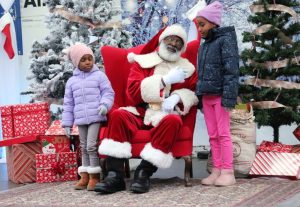Correction, Sept. 17: This story has been corrected to clarify that the museum has four red wolves, not two as originally reported.
Only a few at the Museum of Life and Science in Durham remember when Hurricane Fran hit: three staff members, a couple of turtles, and Misha the red-tailed hawk.
The morning after that 1996 storm, animal caretaker Sherry Samuels returned to the museum to find fences for several enclosures crushed by fallen trees and the bear house filled with water.
“I swam down a road rather than walked down a road. It was that much water,” she said.
The museum had no power, and only a fraction of the staff got to work that day.
The staffers who made it sprang into action. They drained the flooded enclosure and fed warm apples to the shivering bears.
Now, Samuels is the director of the animal department, and she’s leading the museum’s preparation for Hurricane Florence.
When the first forecasts showed Florence heading toward the Carolinas last weekend, staffers at the museum made 80 sandbags to stack in front of areas that might flood. They stocked shelves, inventoried medicines and began planning what to do with the animals.

“There are wonderful things about living in captivity: You get access to health care and food, but you don’t have space or the same choice, and in extreme weather, space and choice is critical,” she said.
Samuels said that this time around, the four black bears will be locked in their house. The lemurs and farm animals will also be kept indoors.
The museum’s four red wolves – two adults and their two juvenile pups – are her primary concern. They’re part of a breeding program to conserve the critically endangered species native to the southeast.
“The wolves are really nervous, shy animals, so it’s always a judgment call of whether to leave them where they are or crate them up and bring them inside, which is very stressful on the wolves and people,” Samuels said.
Before the storm hits, she’ll have to decide if they’ll stay in their six-acre enclosure or come inside.
When designing its new Explore the Wild exhibit to house the bears and wolves, the museum took into account lessons learned from Hurricane Fran.
The bear house was built on a site three feet higher, and the drains were revamped to better control flooding.
“Everything — from procedures to protocols to training to infrastructure — is all better now,” Samuels said. “Does that mean we’re going to ride out the storm and not have any issues? No, each storm has a life of its own, but we can try to prepare.”





Comments are closed.